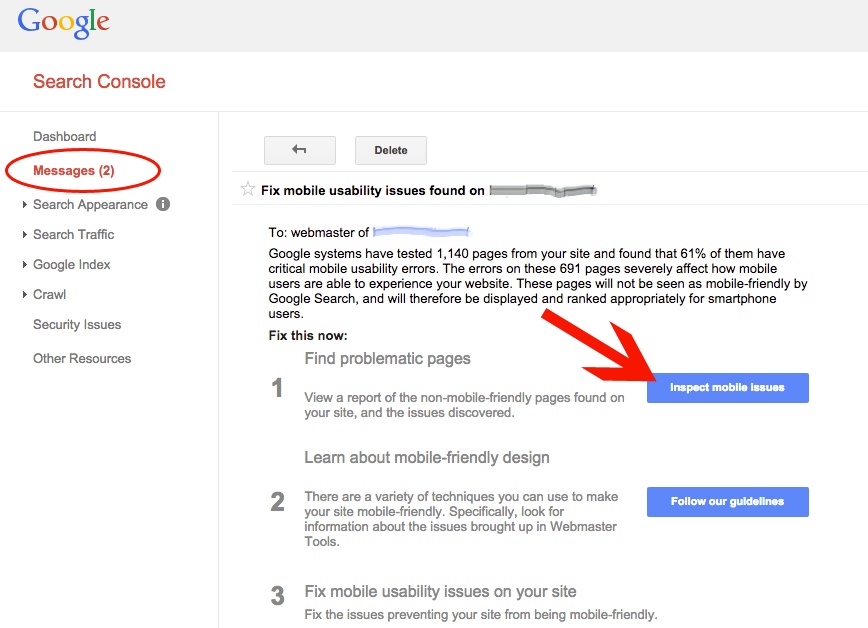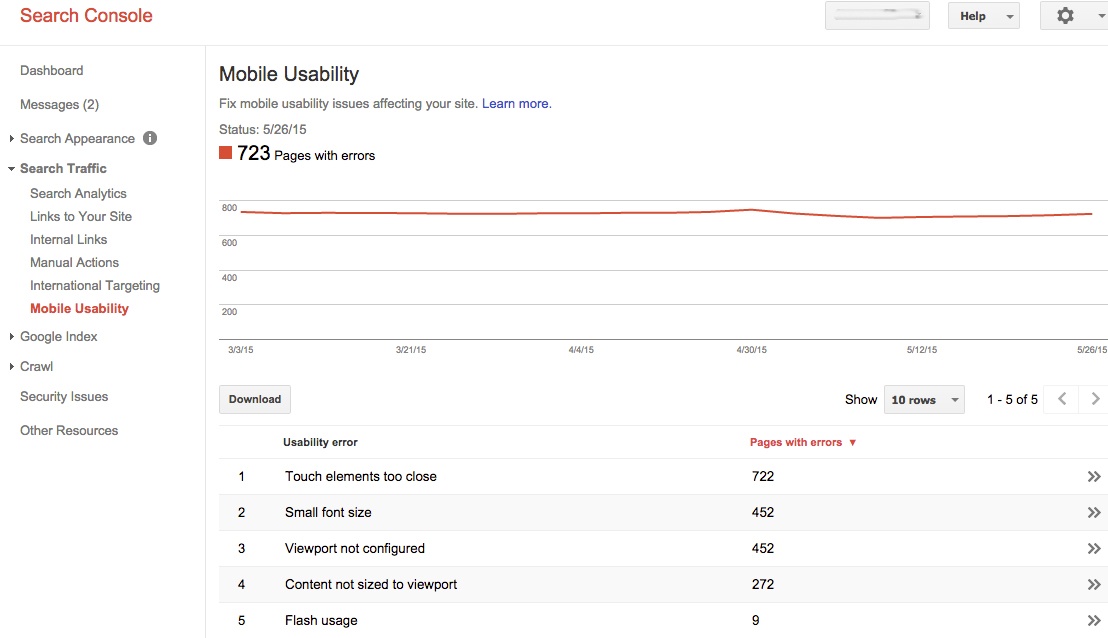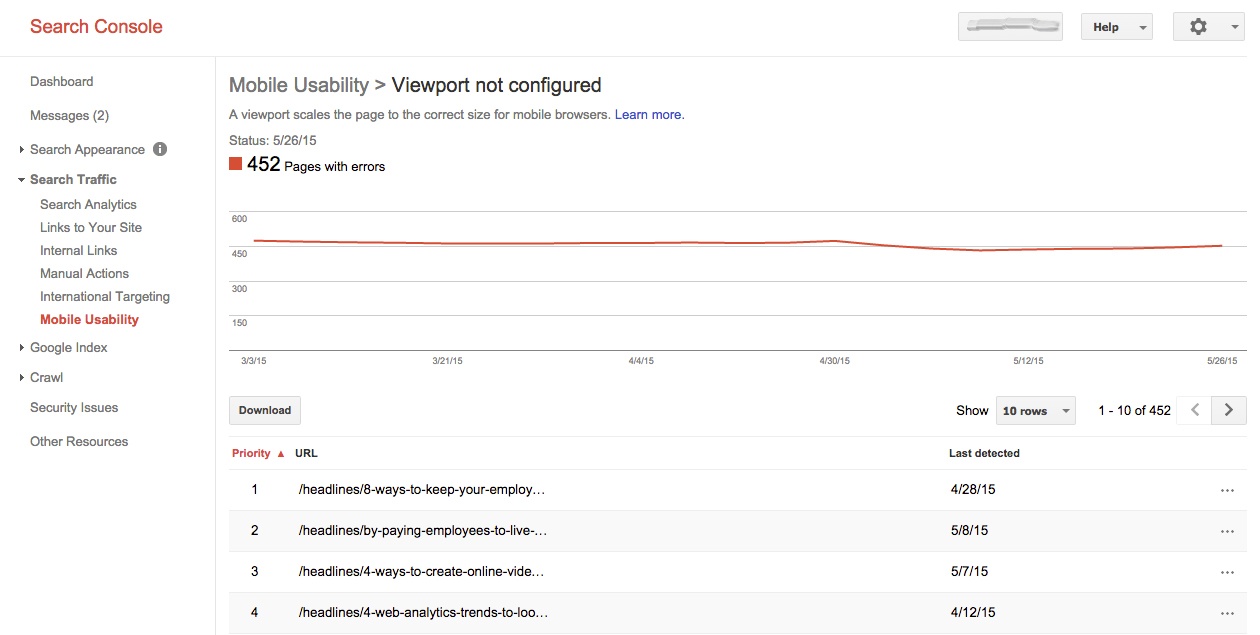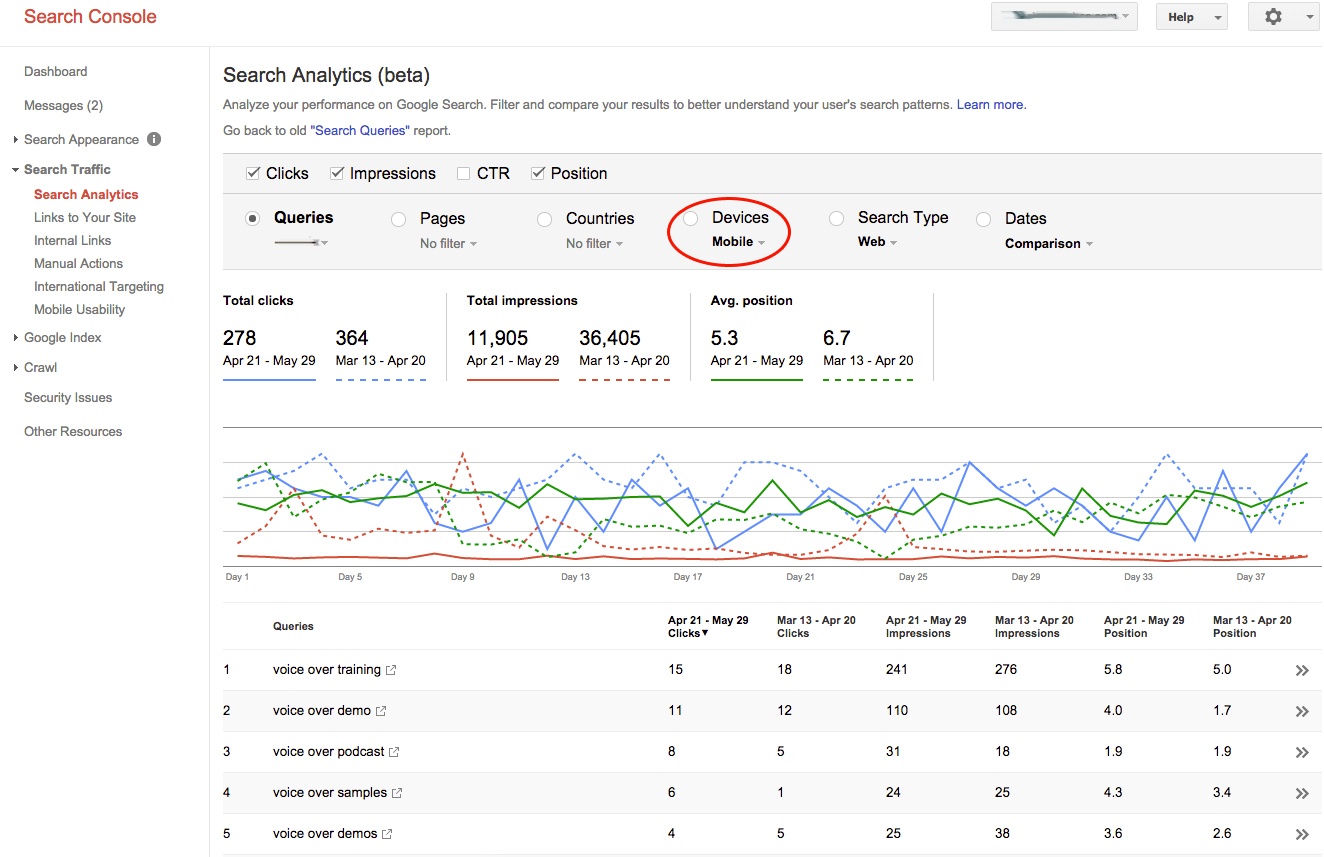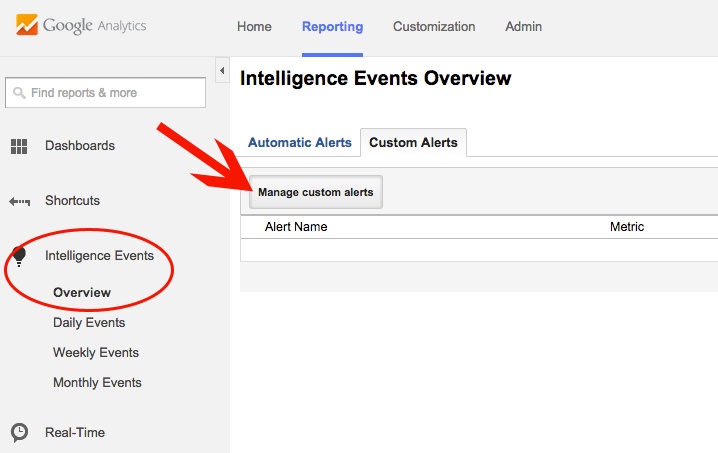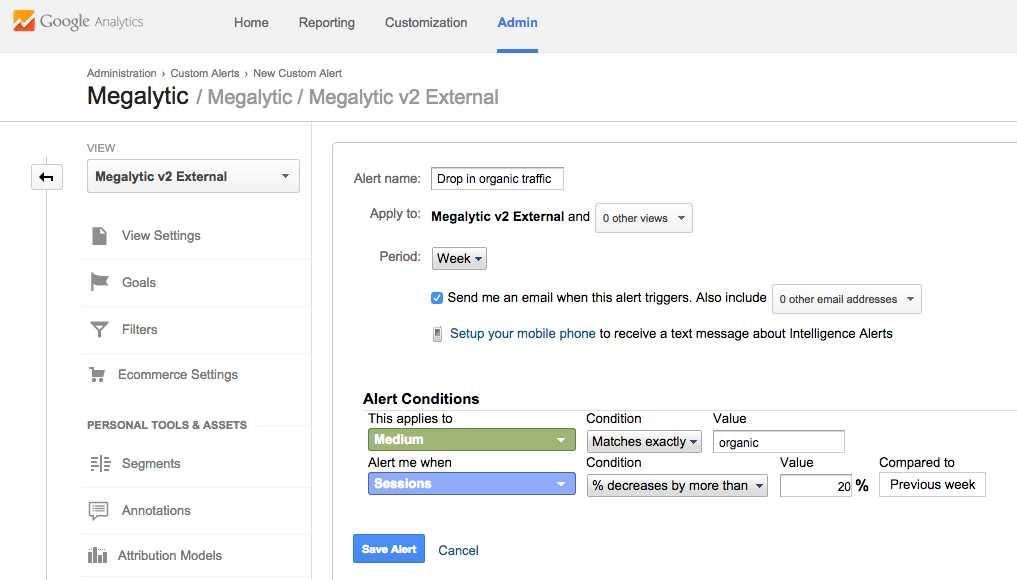Using Google Analytics and Search Console to Assess Mobile Performance

Identifying Mobile Problems via Search Console
We just told you that Google is now penalizing non-mobile friendly pages. Are you freaking out? We understand. So, how can you tell if you’re getting hit with a mobile ranking penalty?
With Search Console set up, you’ll see an alert at the top of the Search Console Dashboard if a mobile issue has been flagged on your site. You can also check the “Messages” section for your site to see if a warning has come through.
If issues have been flagged, you’ll see a message similar to the one above. To delve into specific issues, click the “Inspect mobile issues” button. Here, you’ll see a list of issues found on your site, broken out by category.
Google provides detailed guidance as to what elements are problematic on your site. Here are the major categories you’ll see:
- Touch elements too close: This refers to buttons or navigation elements being placed so closely together that users may have difficulty selecting what they intend to “tap.” Selecting items by tapping your fingers is more cumbersome (and less precise) than clicking a mouse. Adequate spacing must be accounted for.
- Small font size: This refers to text size being too small for the average user to easily read on a mobile device without zooming.
- Viewport issues (viewport not configured, content not sized to viewport): This refers to the site not scaling properly to a mobile device’s screen size. It may be an indication the site doesn’t incorporate responsive design properly or serve a dedicated mobile site.
- Flash usage: This refers to the site relying on Flash elements, which cannot display on mobile devices.
For more specifics on each of these areas, see Google’s guidelines.
Selecting any of these categories will allow you to view the pages on your site that contain errors. You’ll then see a complete list of URLs, allowing you to investigate issues further. Your developer will be able to evaluate what technical edits need to be done to allow your site to display properly on mobile devices.
Monitoring Mobile Organic Search Traffic
It’s important to see if you’ve lost traffic due to mobile issues or a lost rank in mobile results—so how you can tell? Use the newly-updated Search Analytics section of Search Console to find data such as the impressions and clicks your site received in organic search, segmented by device.
First, we’ll filter out brand searches (which you should naturally be ranking for, apart from severe penalties) to specifically isolate traffic for non-branded terms. These terms are more likely to be affected by penalties. From within the Search Analytics page (found under the Search Traffic dropdown on the left sidebar), click the dropdown under “Queries” and then select “Filter queries.”
In the box that appears, choose “Queries not containing” and enter your brand name in the box. If you want to add multiple terms (for example, to account for popular misspellings of your brand name), separate these variations with commas. Click “filter” and you’ll now see data only for non-brand queries.
Next, you’ll want to filter by Devices, from the bar above the graph, to show Mobile-only results.
The below example shows Search Analytics for a voiceover training company whose site has many issues on mobile devices (including not being responsive and not having a dedicated mobile site). For the date range, we’re looking at April 21 (the date Google rolled out the mobile algorithm update) and onward, as compared to the previous time period.
From this data, we can make several observations:
- Clicks from mobile searches have dropped fairly significantly since the previous period, with an almost 25% decrease
- Impressions from mobile searches have dropped even more significantly, with a nearly 70% decrease
- Average position, overall, has actually increased (perhaps due to fewer overall queries driving traffic), but appears to have dropped for some of the highest volume keywords
Looking at the list of specific queries, we see that “voiceover training” dropped from position 5 to 5.8, while “voice over demo” dropped from 1.7 to 4. Four out of five of the top queries have dropped in position.
Watching ranking and traffic changes in Search Console should be a regular part of your schedule. You should monitor not only your site’s overall organic traffic but also organic traffic broken down by device to ensure that you are ranking properly on both mobile and desktop. Watch for major click and impression drops (the impression drop is most concerning in this report) while also monitoring position, realizing that all of these metrics can fluctuate to some extent.
If mobile impressions and clicks are dropping significantly, look for warning messages flagging mobile usability issues with your site. You should have your developer immediately address any problems found.
Setting Up a Google Analytics Alert
Penalties for mobile usability will be reflected in your analytics data, reflected by a lower volume of traffic. To make sure you don’t miss any sudden changes in organic clicks or impressions, you can set up an alert via Google Analytics. You’ll then get an email notification to remind you to look into potential problems further.
To set up an alert, go to Intelligence Events > Overview from with the main Google Analytics Reporting view. Then select “Manage custom alerts.”
Here you’ll see a screen where you can choose to set up a new alert. From here, you can choose the time period you’d like to watch. In this case, we’re monitoring weekly stats.
Next, under Alert Conditions, we’ll filter so Medium matches Organic. This allows us to strictly monitor organic search traffic. Finally, we set the alert to trigger when sessions decrease by more than 20%.
Once set up, you’ll receive an email every time organic sessions drop by more than 20% in a week (a seven day period). While no issues may have occurred, you can at least take the time to look into potential problems, segmenting by device as shown earlier to see if the issue is specific to mobile.
Conclusion
If you haven’t already done so, making sure your site works properly on mobile is absolutely necessary in the current state of the web. Google threatens penalties for sites that don’t provide a user-friendly mobile experience.
Thankfully, Search Console offers detailed analysis for warnings about potential mobile issues and flagging exactly where these occur. Take the time to watch stats specific to mobile for your site and make sure you’re not losing potential mobile customers.
